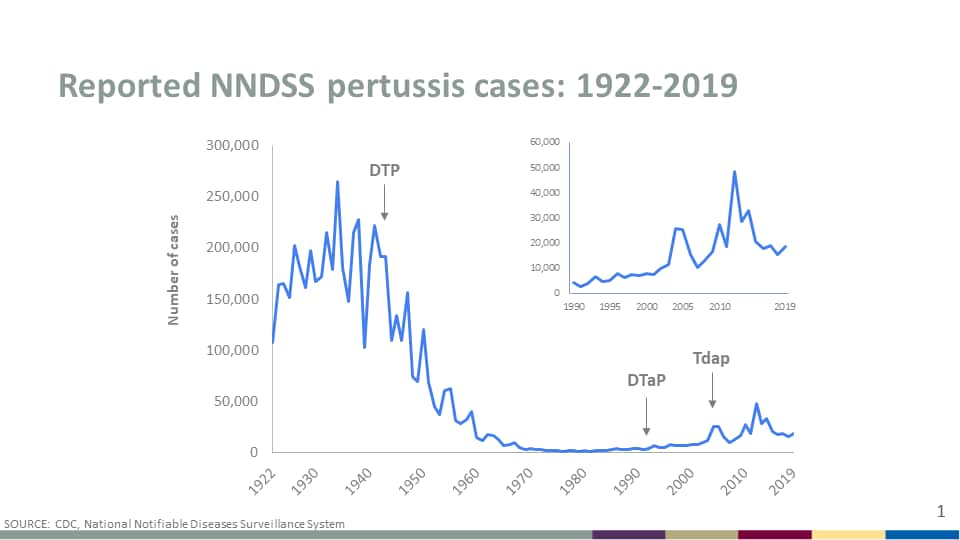Rationale: Why Vaccinate Pregnant Women?
In recent years, prior to the COVID-19 pandemic in 2020, pertussis was on the rise and outbreaks were occurring across the United States. Unfortunately, today’s pertussis vaccines are not long lasting. For this reason, public health efforts are focused on protecting those who are most at risk of contracting pertussis and having severe, potentially life-threatening complications from the infection— infants.
Pertussis trends
Since the late 1980s through the first few months of 2020, there was an increase in the number of reported cases of pertussis. In 2012, the last peak year, CDC reported 48,277 cases of pertussis.
Seriousness of pertussis for mother and infant
Pertussis can cause serious and sometimes life-threatening complications in infants, especially within the first 6 months of life. In infants younger than 1 year of age who get pertussis, about half need treatment in the hospital. The younger the infant, the more likely they will need treatment in the hospital.
Of those infants who are hospitalized with pertussis, about 68% will experience apnea, 22% will develop pneumonia, and 1% will die. Prior to the COVID-19 pandemic, up to 20 infants have died each year in the United States. Most pertussis deaths are infants who are too young to be protected by the childhood pertussis vaccine (DTaP).
Adolescents and adults, including pregnant women, can also experience complications from pertussis. Complications are usually less serious in this age group, especially in those who have been vaccinated. The cough itself often causes common complications in adolescents and adults, including urinary incontinence, syncope, and rib fractures.
No pertussis vaccine available for infants at birth
There are no pertussis vaccines licensed or recommended for newborns at birth. The best way to prevent pertussis in a young infant is
- By vaccinating the mother with Tdap during pregnancy
- Encouraging people around the infant to be up to date with their pertussis vaccines
- Administering the childhood DTaP series on schedule
Maternal vaccination during pregnancy confers protection to infant
Transplacental transfer of maternal pertussis antibodies from mother to infant provides some protection against pertussis in early life, before infants can receive the primary DTaP series beginning at 2 months of age.
Childhood DTaP series starts at 2 months
It is very important for infants to get their pertussis vaccine (DTaP) according to the childhood immunization schedule so they can start building their own protection against the disease. Clinicians should administer the primary series at 2, 4, and 6 months to build up high levels of protection. They should administer booster shots at ages 15 through 18 months and 4 through 6 years to maintain that protection throughout childhood.
Adolescents also need a booster dose of Tdap at 11 or 12 years of age.

